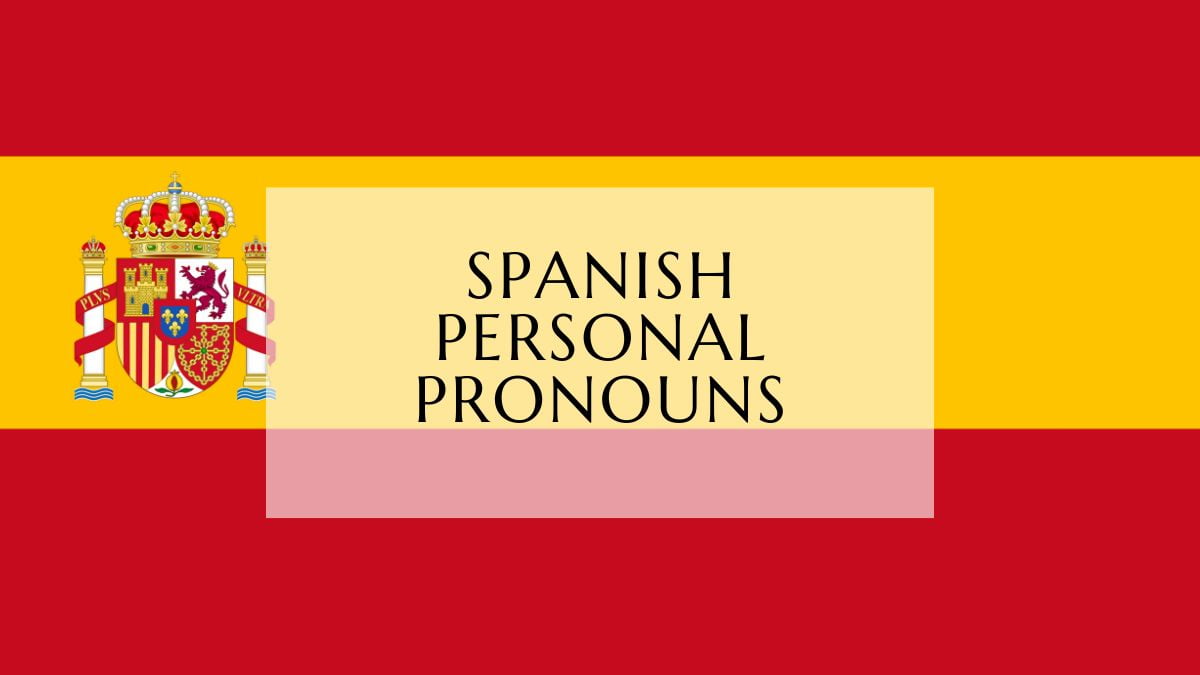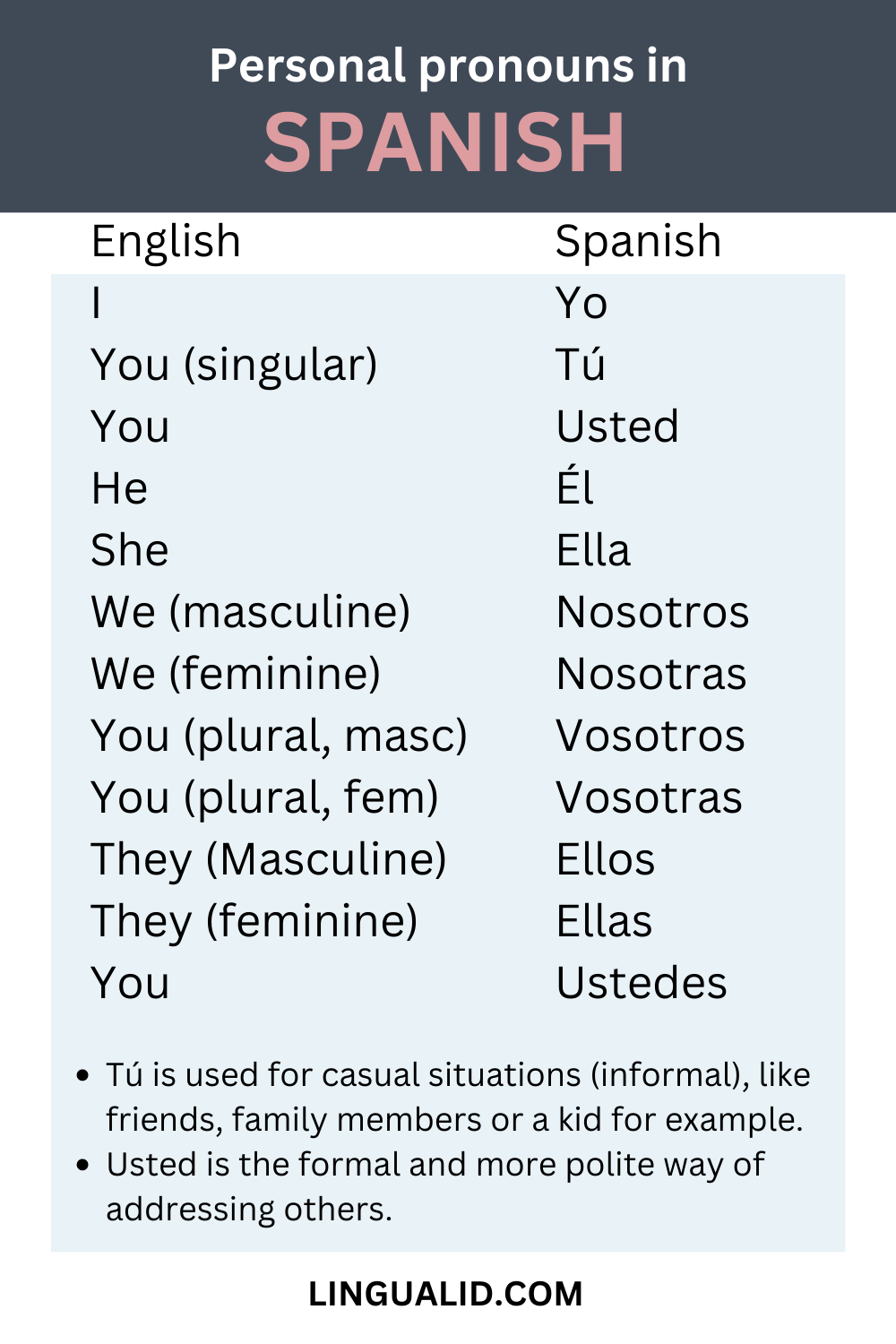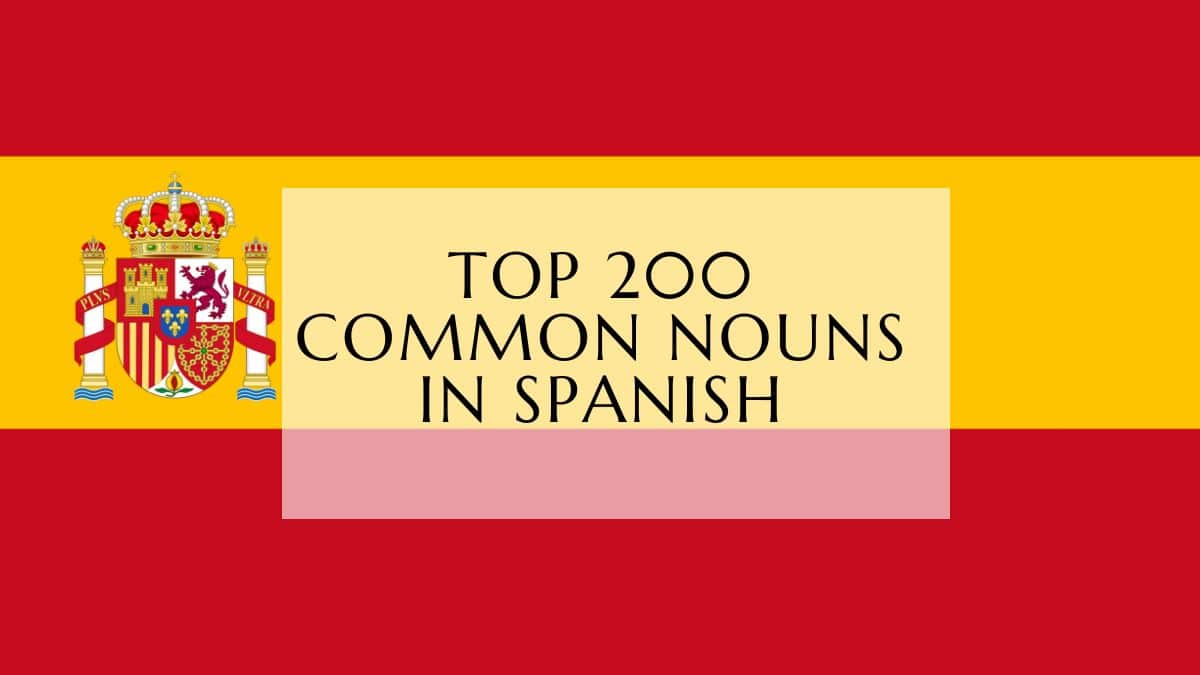Spanish Personal Pronouns is one of the first basic lessons every Spanish learner must learn to talk about or describe anything, of course adding to that verbs, nouns, and adjectives to give complete sentences. So in this post, we will talk about personal pronouns in Spanish and provide some brief explanations.

| English | Spanish |
| I | Yo |
| You (singular) | Tú |
| You | Usted* |
| He | Él |
| She | Ella |
| We (masculine) | Nosotros |
| We (feminine) | Nosotras |
| You (plural, masc) | Vosotros |
| You (plural, fem) | Vosotras |
| They (Masculine) | Ellos |
| They (feminine) | Ellas |
| You | Ustedes |
Note: you can practice what you’ve learned here, and learn how to pronounce each of the words in our Memrise course here, don’t know how to use the platform or sign up? we’ve got you covered in this easy-to-follow tutorial here.
Tips:
- There is no “it“, every Spanish word has a gender, so it is either “él” or “ella“.
- They: If we’re talking about a group of males we use “ellos“, for females we say “ellas“, and for a group of a mix of genders, we use also “ellos“
- We: there are two forms: nosotros and nosotras ; nosotros for a group of males or a mix of genders, and nosotras for a group of females
- The pronoun “vos” (you singular) is mainly used in Argentina
- Tú is used for casual situations (informal), like friends, family members or a kid for example.
- Usted is the formal and more polite way of addressing others.

Spanish Personal Pronouns Review
Quiz
- What is the difference between “tú” and “usted”? Give an example of when you would use each.
- Explain the difference between “nosotros” and “nosotras.” Provide an example sentence for each.
- How do you say “they” in Spanish when referring to a group of all women? What about a group of all men?
- Is there a direct translation of the pronoun “it” in Spanish? Why or why not?
- In which Spanish-speaking country is “vos” commonly used as a singular pronoun for “you”?
- What is the Spanish pronoun for “she”?
- Provide the Spanish translations for “we” in both its masculine and feminine forms.
- If you are addressing a group of friends in Spain, which pronoun would you use, “vosotros” or “ustedes”?
- What is the difference between singular and plural pronouns?
- Explain the concept of grammatical gender in Spanish using personal pronouns as an example.
Answer Key
- “Tú” is the informal “you,” used with friends, family, and peers, while “usted” is the formal “you,” used to show respect. Example: “Tú eres mi amigo” (You are my friend) vs. “Usted es muy amable” (You are very kind).
- “Nosotros” is the masculine “we,” used for a group of men or a mixed group, while “nosotras” is the feminine “we,” used for a group of women. Example: “Nosotros vamos al cine” (We are going to the movies – group of men or mixed) vs. “Nosotras vamos de compras” (We are going shopping – group of women).
- “They” for a group of all women is “ellas.” For a group of all men, it is “ellos.”
- No, there is no direct translation for “it” in Spanish. This is because every noun in Spanish has a grammatical gender, so you would use either “él” (he) or “ella” (she) depending on the gender of the noun being replaced.
- “Vos” is commonly used as a singular pronoun for “you” in Argentina.
- The Spanish pronoun for “she” is “ella.”
- The masculine form of “we” is “nosotros” and the feminine form is “nosotras.”
- When addressing a group of friends in Spain, you would use “vosotros.”
- Singular pronouns refer to one person or thing (e.g., I, you, he), while plural pronouns refer to more than one person or thing (e.g., we, you, they).
- Spanish nouns and pronouns have grammatical gender. For example, the pronoun “he” is “él” and the pronoun “she” is “ella.” This means that even objects and concepts are assigned a gender in Spanish.
Happy learning!
Oualid Cheddadi is the founder of Lingualid, a platform that inspires independent language learners worldwide, regardless of the language they are learning. The name “Lingualid” is derived from the Portuguese word for “language,” “língua,” and the last three letters of Oualid’s name, “Lid.”



